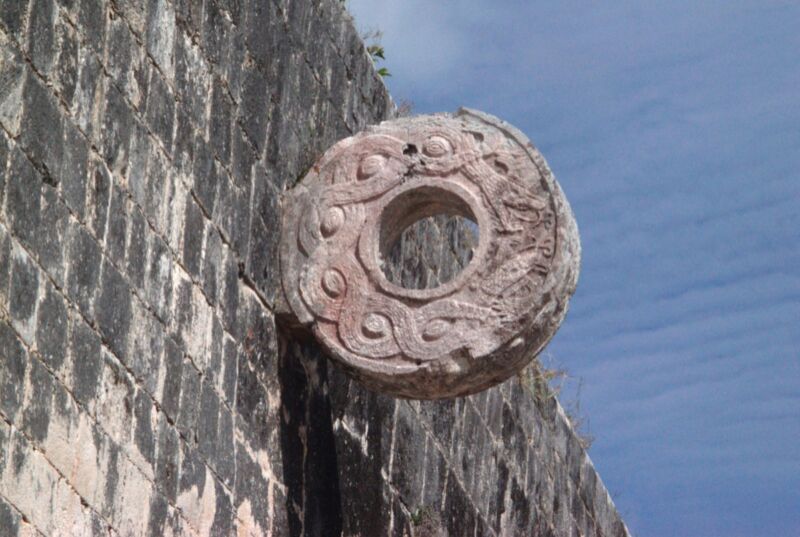
It is well-known that the traditional Maya had their very own model of ball video games, which had been performed with a rubber ball on stone courts. Such video games served not simply as athletic occasions but additionally non secular ones that always concerned ritual sacrifices. Archaeologists have now discovered proof that the Maya could have blessed newly constructed ball courts in rituals involving vegetation with hallucinogenic properties, in response to a new paper printed within the journal PLoS ONE.
“After they erected a brand new constructing, they requested the goodwill of the gods to guard the individuals inhabiting it,” stated co-author David Lentz of the College of Cincinnati. “Some individuals name it an ensouling ritual, to get a blessing from and appease the gods.” Lentz and his group beforehand used genetic and pollen analyses of the wild and cultivated vegetation discovered within the historical Maya metropolis Yaxnohcah in what’s now Mexico’s Yucatan Peninsula, revealing proof of sustainable agriculture and forestry spanning a millennia.
As we have reported beforehand, there’s ample proof that people in lots of cultures all through historical past used numerous hallucinogenic substances in non secular ceremonies or shamanic rituals. That features not simply historical Egypt but additionally historical Greek, Vedic, Maya, Inca, and Aztec cultures. The Urarina individuals who reside within the Peruvian Amazon Basin nonetheless use a psychoactive brew referred to as ayahuasca of their rituals, and Westerners in search of their very own model of enlightenment have additionally been recognized to take part.
Final 12 months, archaeologists discovered that an historical Egyptian vase within the form of the deity Bes confirmed traces of chemical plant compounds recognized to provide hallucinations. Particularly, they recognized Syrian rue (Peganum harmala), whose seeds are recognized to have hallucinogenic properties that may induce dream-like visions, per the authors, because of its manufacturing of the alkaloids harmine and harmaline. There have been additionally traces of blue water-lily (Nymphaea cerulea), which accommodates a psychoactive alkaloid that acts as a sedative; it is considered one of a number of candidate vegetation that students consider could be the fruit of the lotus tree described in Homer’s Odyssey. Members of the cult of Bes could have consumed a particular cocktail containing the compounds to induce altered states of consciousness.
And in 2022, archaeologists uncovered proof that an historical Peruvian individuals laced the beer served at their feasts with hallucinogens. Excavations at a distant Wari outpost referred to as Quilcapampa unearthed seeds from the vilca tree that can be utilized to provide a potent hallucinogenic drug. The seeds, bark, and different elements of the tree all comprise DMT, a well known psychedelic substance that can be discovered within the ayahuasca brews of Amazonian tribes. Nevertheless, the first energetic ingredient is bufotenine. There’s additionally proof from historic accounts {that a} juice or tea derived from vilca seeds was generally added to chicha, a fermented beverage produced from maize or the fruits of the molle tree native to Peru.
The individuals of the neighboring state of Tiwanaku had been recognized to combine such hallucinogens with alcohol, particularly maize beer. Nevertheless, the Wari probably used these substances to assist forge political alliances and develop their empire. It is attainable the Wari held one large ultimate blowout earlier than the positioning was deserted. The Wari empire lasted from round 500 CE to 1100 CE within the central highlands of Peru.
This newest research stems from soil samples taken throughout excavations from 2016 to 2022 at Yaxnocah, 9 or so miles north of the Guatemalan border—particularly from a stone and earthen ball court docket platform linked by a causeway to a close-by ceremonial advanced. Some 300 such ball courts have been discovered within the highlands of Guatemala and Chiapas, most courting to the post-classic interval.